Sofia: A Journey Through Time
Explore Sofia's rich history and vibrant culture on this free walking tour, uncovering hidden gems and iconic landmarks that tell the story of the city.
Time
3 Hours
Stops
9 Places
Distance
2.2 km
St. Alexander Nevsky Cathedral
Start your tour at the iconic St. Alexander Nevsky Cathedral, one of the largest Eastern Orthodox cathedrals in the world and a symbol of Sofia's spiritual heritage.
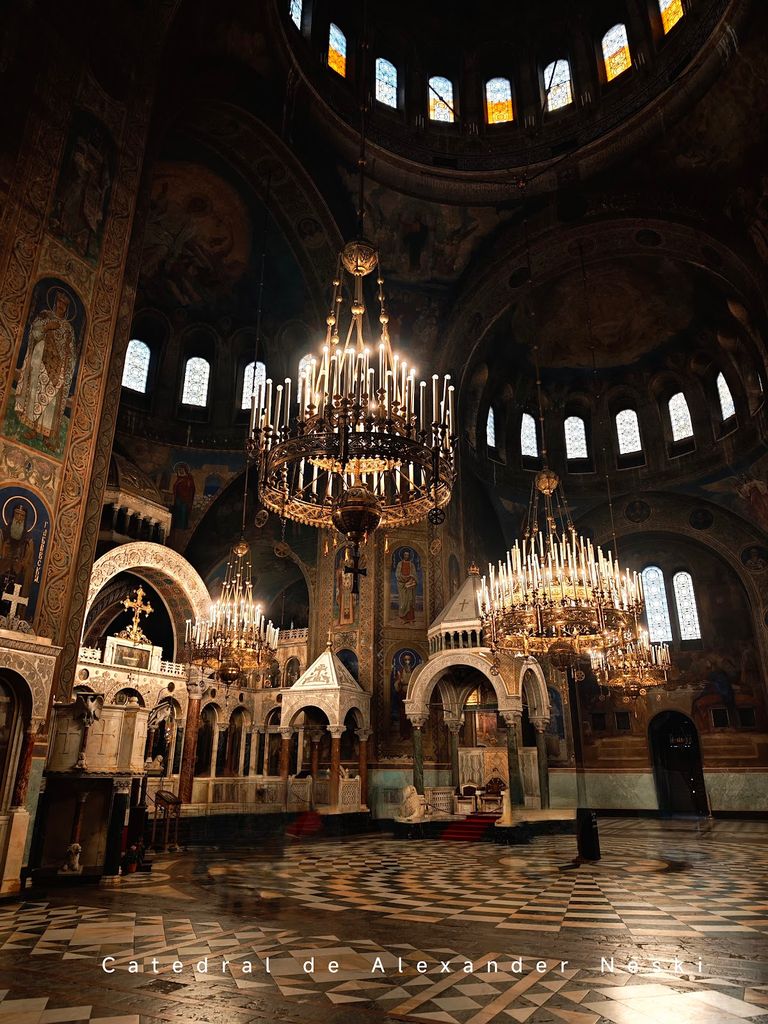
St. Alexander Nevsky Cathedral (Source: Google Maps)
St. Alexander Nevsky Cathedral, completed in 1912, is a monumental symbol of Sofia and one of the largest Eastern Orthodox cathedrals globally. Designed by architect Alexander Pomerantsev, it boasts a neo-Byzantine style characterized by its stunning golden domes and intricate mosaics. The cathedral can accommodate around 10,000 worshippers and is dedicated to the Russian soldiers who died during the Russo-Turkish War. Its interior features exquisite frescoes, ornate iconography, and a rich collection of religious artifacts, making it a significant spiritual and cultural site in Bulgaria.
National Assembly of the Republic of Bulgaria
Continue to the National Assembly building, a significant political landmark where Bulgaria's parliament convenes, reflecting the country's governance and history.
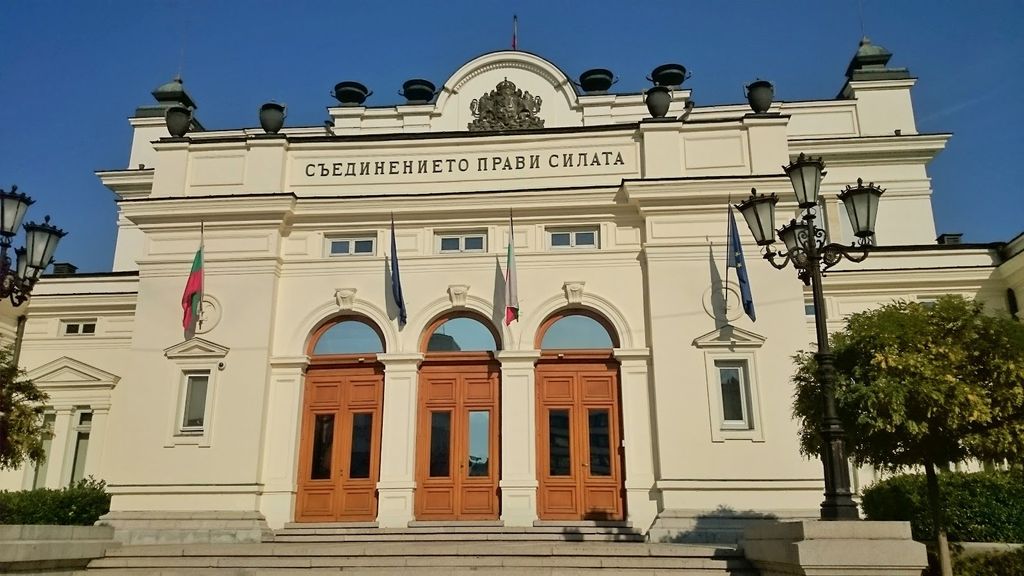
National Assembly of the Republic of Bulgaria (Source: Google Maps)
The National Assembly building, completed in 1934, serves as the heart of Bulgaria's political life. Its neoclassical architecture, characterized by grand columns and a prominent dome, reflects the aspirations of the nation during the early 20th century. The building houses the legislative body of Bulgaria, where crucial decisions regarding the country's governance are made. The surrounding area is rich in history, with several monuments and statues commemorating important figures in Bulgarian history. The National Assembly stands as a testament to Bulgaria's democratic evolution and political heritage.
Russian Church (Church of St. Nicholas the Miracle-Maker)
Discover the charming Russian Church with its striking gold domes, known for its beautiful architecture and serene atmosphere.
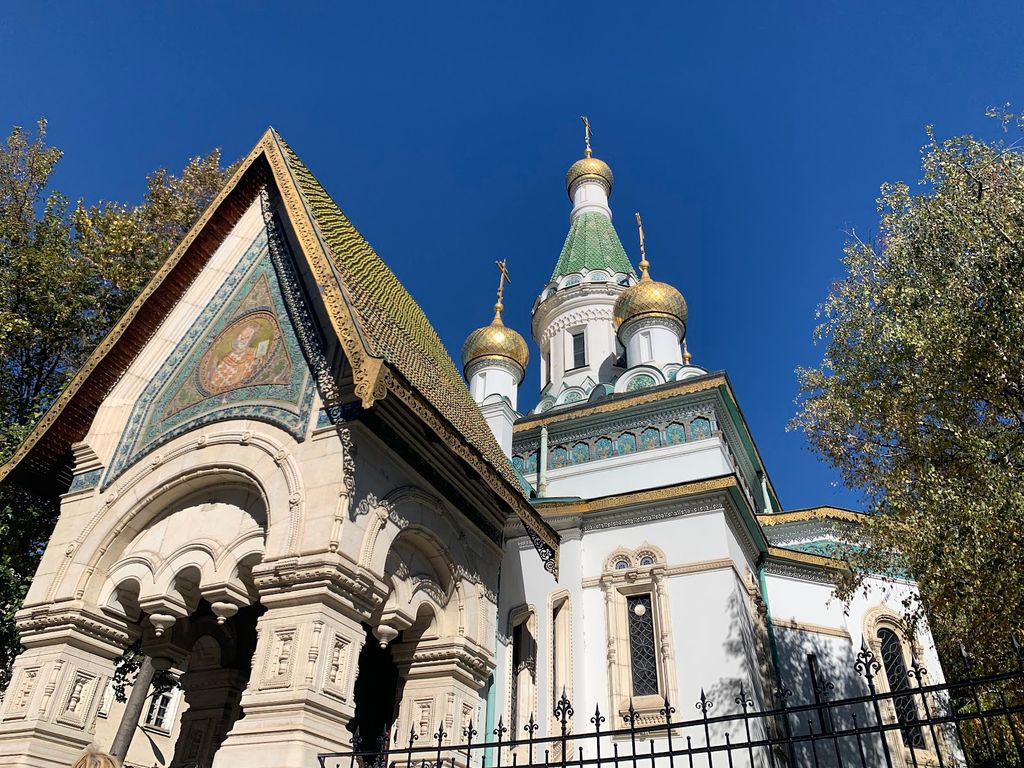
Russian Church (Church of St. Nicholas the Miracle-Maker) (Source: Google Maps)
The Russian Church, officially known as the Church of St. Nicholas the Miracle-Maker, was built between 1907 and 1914 and is known for its striking golden domes and vibrant colors. The church is a prime example of Russian Revival architecture, featuring intricate woodwork and beautiful frescoes that depict scenes from the lives of saints. It was constructed to honor the Russian soldiers who fought during the Balkan Wars and is a symbol of the historical ties between Bulgaria and Russia. The serene atmosphere and beautiful gardens surrounding the church make it a popular spot for both locals and tourists.
National Gallery for Foreign Art
Just a short walk from the cathedral, explore the National Gallery for Foreign Art, showcasing a diverse collection of international art in a beautiful neoclassical building.
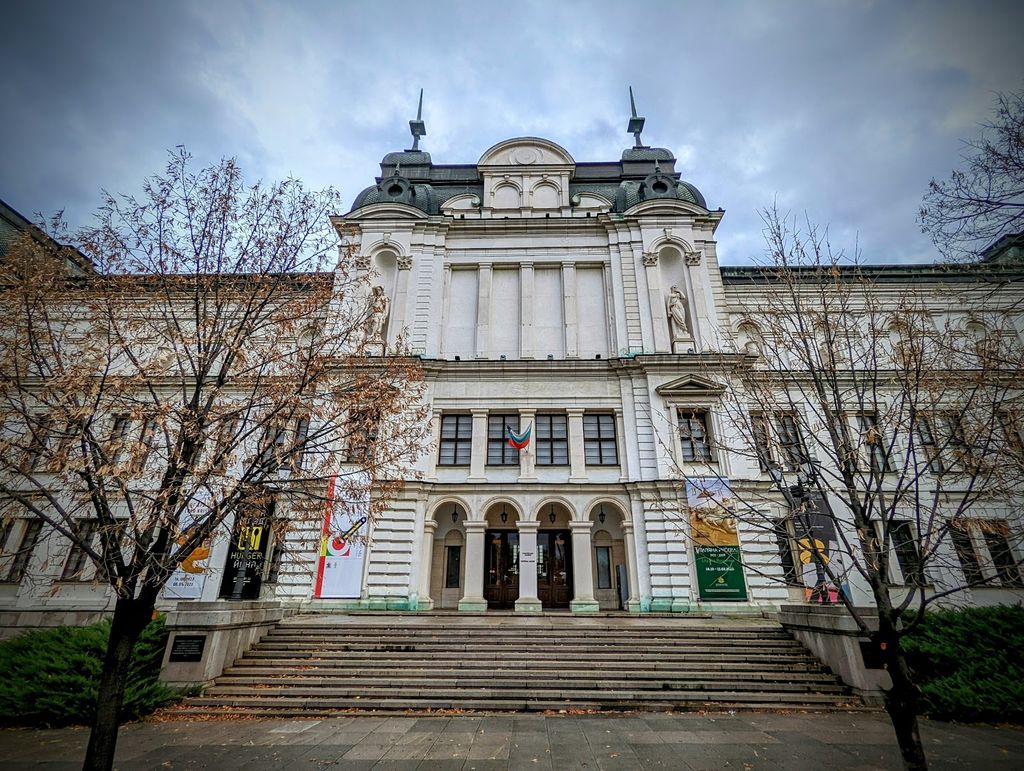
National Gallery for Foreign Art (Source: Google Maps)
Housed in a former royal palace, the National Gallery for Foreign Art showcases an extensive collection of international art, with works spanning from the Middle Ages to contemporary pieces. Established in 1985, the gallery emphasizes European art, particularly from the Italian Renaissance, Dutch Golden Age, and 19th-century French works. The neoclassical architecture of the building itself adds to the cultural experience, with elegant halls and spacious exhibition areas. The gallery aims to promote cultural exchange and appreciation for global artistic achievements, making it a vital institution for art lovers in Sofia.
Ivan Vazov National Theatre
Walk over to the Ivan Vazov National Theatre, Bulgaria's national theatre and a masterpiece of architecture, offering insight into the country's rich theatrical traditions.
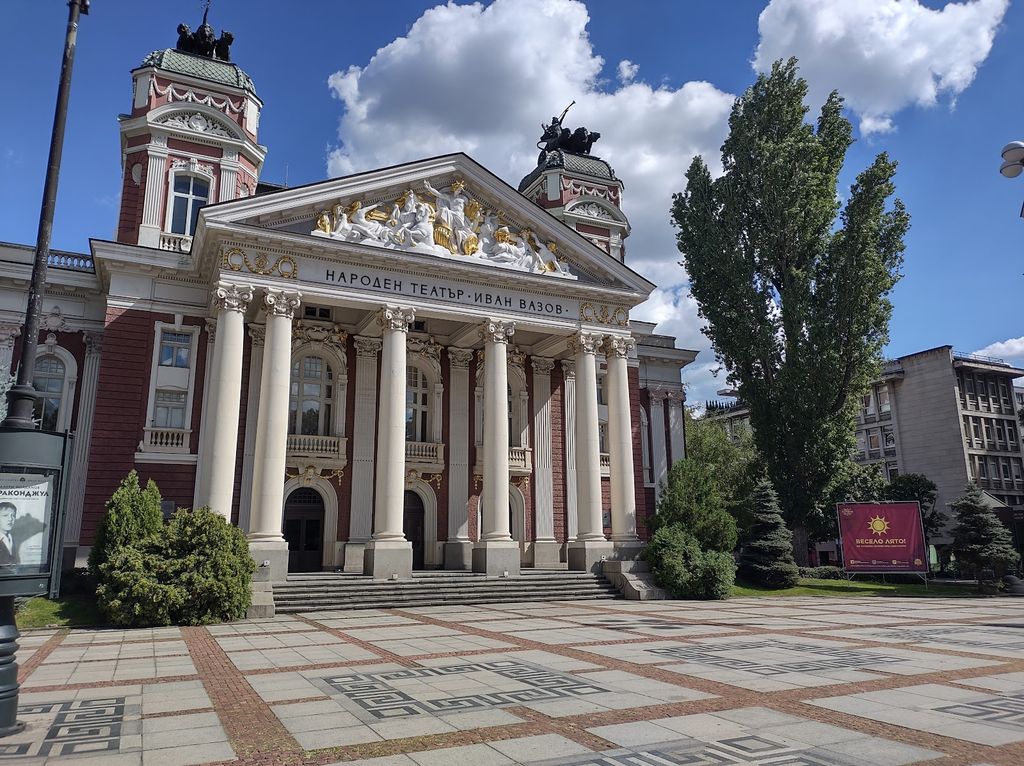
Ivan Vazov National Theatre (Source: Google Maps)
The Ivan Vazov National Theatre, built in 1907, is Bulgaria's oldest and most prestigious theatre, named after the famous Bulgarian playwright Ivan Vazov. Its stunning architecture features a neoclassical facade adorned with sculptures and reliefs that celebrate Bulgaria's cultural heritage. The theatre hosts a diverse range of performances, from classic plays to modern dramas, and has played a crucial role in the development of Bulgarian theatre. The interior is equally impressive, with opulent decorations and a grand auditorium that provides an intimate setting for audiences. The theatre is a cultural landmark and a hub for artistic expression in Sofia.
City Garden
Adjacent to the theatre, take a leisurely stroll through the City Garden, Sofia's oldest and most central public park, perfect for a brief rest and people-watching.
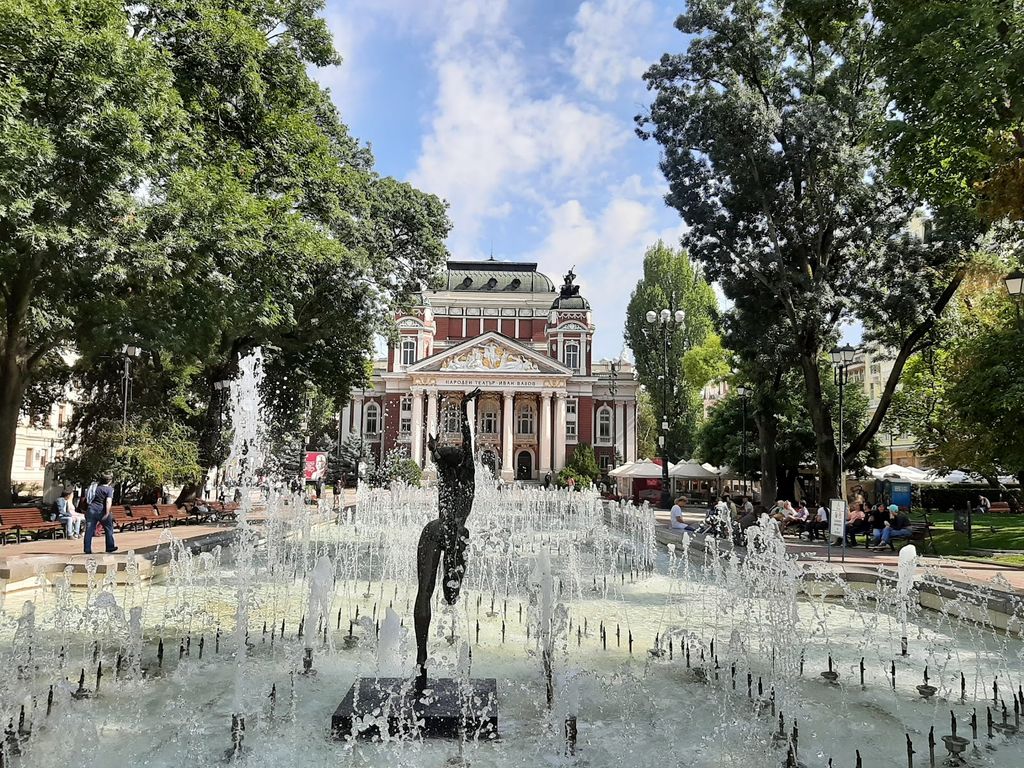
City Garden (Source: Google Maps)
The City Garden, established in the 19th century, is Sofia's oldest public park and a beloved gathering place for locals. Located near the Ivan Vazov National Theatre, the garden features beautifully landscaped paths, fountains, and numerous benches, making it an ideal spot for relaxation and socializing. The park is home to several monuments and sculptures, including a statue of the famous Bulgarian poet Ivan Vazov. Over the years, the City Garden has hosted various cultural events, exhibitions, and concerts, contributing to its status as a vibrant cultural hub in the heart of Sofia.
The Rotunda of St. George
Visit the Rotunda of St. George, a well-preserved Roman building and the oldest architectural monument in Sofia, offering a glimpse into the ancient past.
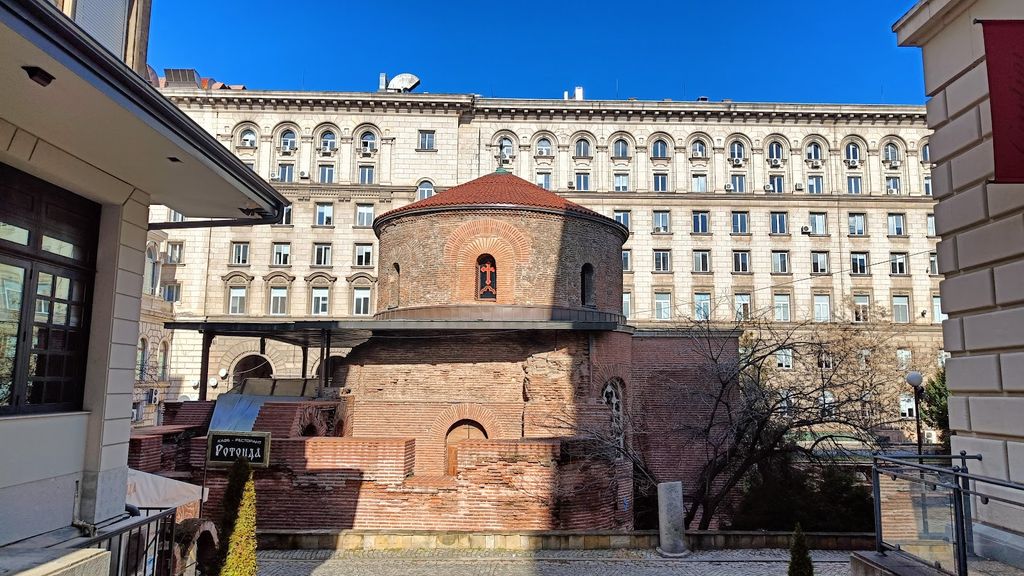
The Rotunda of St. George (Source: Google Maps)
The Rotunda of St. George, dating back to the 4th century, is the oldest preserved building in Sofia and a remarkable example of early Christian architecture. Originally built as a mausoleum, the structure features a circular plan and is topped with a red brick dome, showcasing the architectural ingenuity of its time. The rotunda is surrounded by remnants of ancient Roman structures, highlighting Sofia's rich historical layers. Today, it serves as a small chapel with beautiful frescoes that date back to the 12th century. The Rotunda stands as a testament to Sofia's long and diverse history, attracting visitors interested in its historical significance.
Central Mineral Baths
Head towards the Central Mineral Baths, an impressive building that showcases Sofia's spa heritage, now housing the Sofia History Museum.
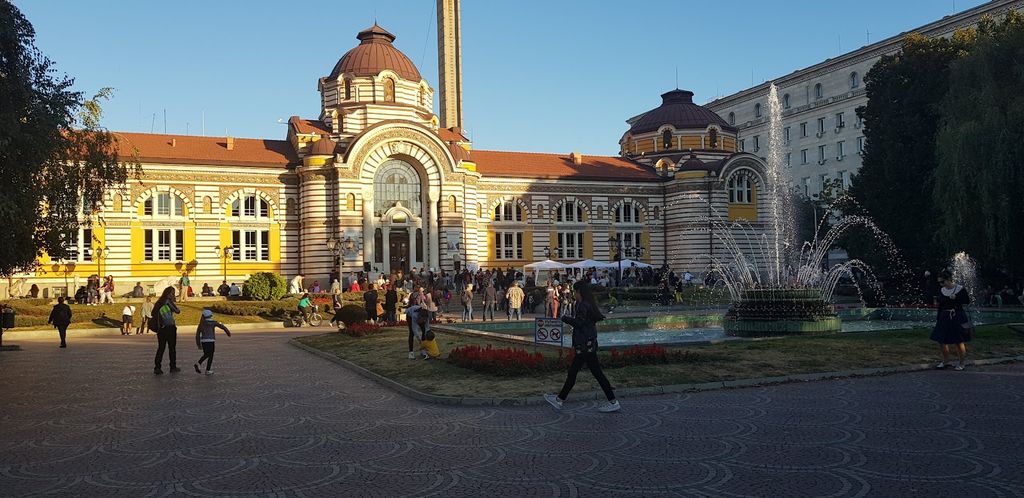
Central Mineral Baths (Source: Google Maps)
The Central Mineral Baths, completed in 1911, are an impressive example of early 20th-century architecture and a reflection of Sofia's spa heritage. The building, designed in a neoclassical style, features a striking facade with colorful ceramic tiles and large arched windows. Once a public bathhouse, it now houses the Sofia History Museum, where visitors can learn about the city's rich past. The baths are famous for their mineral waters, which have been used for therapeutic purposes since Roman times. The Central Mineral Baths remain an important cultural landmark, symbolizing Sofia's connection to its natural mineral resources.
Banya Bashi Mosque
End your tour at the Banya Bashi Mosque, the only functioning mosque in Sofia, highlighting the city's historical diversity and Ottoman influence.
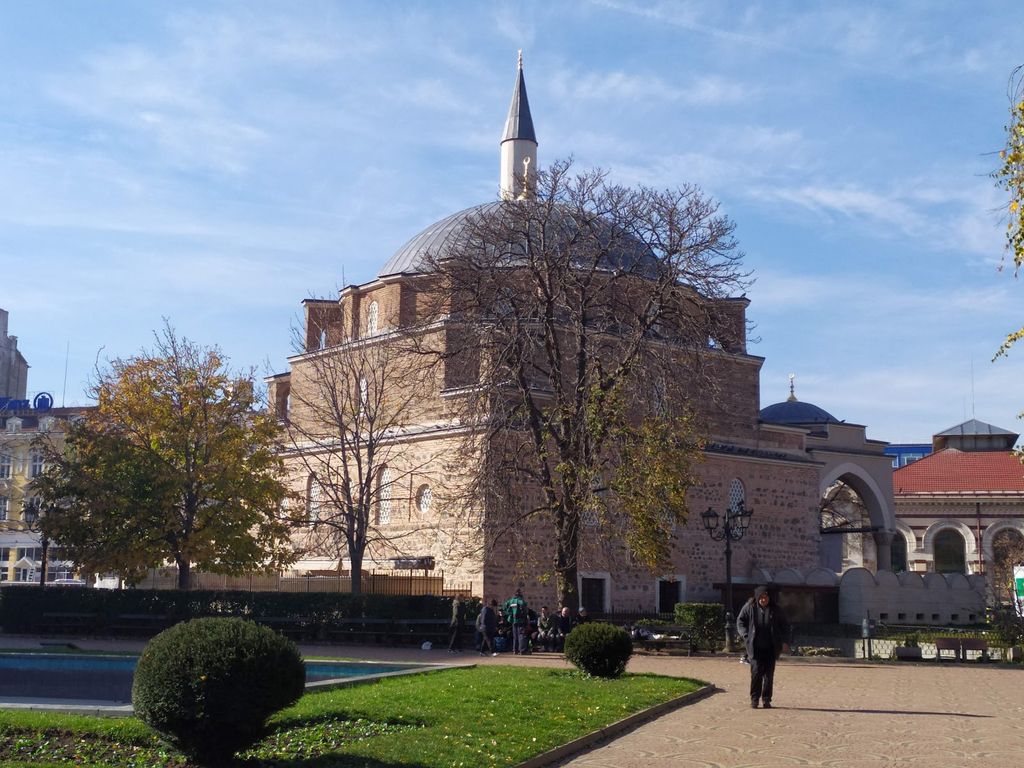
Banya Bashi Mosque (Source: Google Maps)
The Banya Bashi Mosque, built in the 16th century, is the only functioning mosque in Sofia and a prime example of Ottoman architecture in Bulgaria. Its name translates to 'Many Baths,' a nod to the numerous mineral springs in the area. The mosque features a large dome and a slender minaret, with intricate decorative elements that reflect the artistic influences of the Ottoman Empire. The interior is adorned with beautiful calligraphy and motifs, creating a serene worship space. The Banya Bashi Mosque stands as a symbol of Sofia's historical diversity and the coexistence of different cultures and religions, making it a significant landmark in the city.

Your travels, your rules.
Create your own Free Walking Tours.
Set your preferences, distances and anything you want to do or see.
Completely free, no payment required.